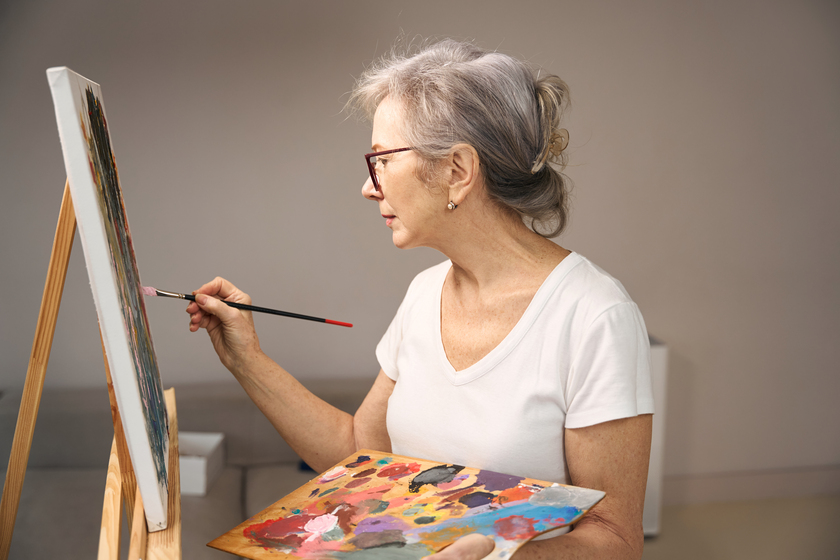The importance of senior mental health cannot be emphasized enough, especially as individuals advance in age. Mental well-being plays a crucial role in ensuring a fulfilling and contented life. Recently, expressive art therapy has gained recognition for its positive impact on the mental health of the elderly. Many retirement communities have started to integrate this therapeutic approach into their programs, with the help of dedicated teams and experts, to provide residents with holistic health support.
What is Expressive Art Therapy?
Expressive art therapy is a multidisciplinary approach that combines visual arts, music, dance, poetry, and other forms of creative expression. This therapeutic method focuses on the process of creating rather than the final product. It offers a safe space for residents to explore their emotions, memories, and experiences. Guided by professional therapists and community team members, participants are encouraged to delve into their inner worlds, unlocking suppressed feelings and tapping into their creative potential.
The Psychological and Emotional Benefits for Elderly
The significance of senior mental health is multifaceted, encompassing emotional, cognitive, and social aspects. Expressive art therapy serves as a bridge to these components. By immersing in the creative process, elderly individuals can do the following:
- Emotional Catharsis Through art, residents can express emotions they might find challenging to articulate verbally. This release can reduce feelings of anxiety, depression, and stress.
- Cognitive Stimulation Engaging in artistic activities stimulates the brain, enhancing cognitive functions and potentially delaying the onset of certain neurodegenerative conditions.
- Enhanced Self-Esteem Completing an art project can instill a sense of accomplishment and boost self-confidence.
- Social Interaction Group sessions offer opportunities for socialization, helping residents bond over shared experiences and reducing feelings of isolation.
The Role of Retirement Communities in Promoting Art Therapy
Retirement communities play an instrumental role in integrating expressive art therapy into residents’ lives. With a focus on holistic senior mental health, these communities can do the following:
- Provide Resources From dedicated art spaces to a team of professional art therapists, communities ensure that residents have everything they need.
- Organizing Regular Sessions Consistency is key. Regularly scheduled art therapy sessions allow residents to make this a part of their routine, reinforcing its benefits over time.
- Encourage Family Participation Family members and loved ones are often invited to partake, creating shared memories and fostering a deeper understanding of the therapeutic process.
Incorporating Art Therapy in Daily Life
Beyond organized sessions, retirement communities encourage residents to integrate art into their daily lives. Simple activities like sketching, journaling, or even casual dancing can serve as therapeutic outlets. Team members are often trained to recognize and support spontaneous creative expressions, ensuring that the environment remains conducive to artistic endeavors at all times.
Senior mental health is a multifaceted domain, requiring innovative and empathetic solutions. Expressive art therapy has emerged as a beacon of hope, offering a holistic approach to mental well-being. Retirement communities, with their dedicated teams and comprehensive resources, are at the forefront of this movement. They provide an environment where residents can explore, express, and heal through art, ensuring that the golden years are not just comfortable but also emotionally enriching. For family members and loved ones seeking holistic care options for the elderly, understanding the profound impact of art therapy can pave the way for more informed decisions.







